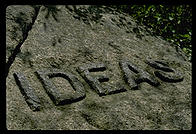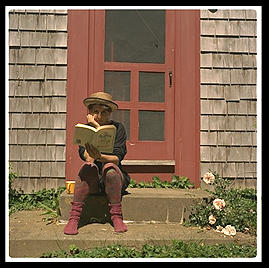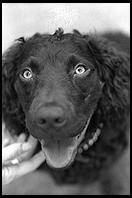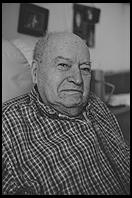

|
Prefaceto Philip and Alex's Guide to Web Publishing by Philip Greenspun |
 This book is a catalog of the mistakes that I've made while building
more than 100 Web sites in the last five years. I wrote it in the hopes
that others won't have to repeat those mistakes.
This book is a catalog of the mistakes that I've made while building
more than 100 Web sites in the last five years. I wrote it in the hopes
that others won't have to repeat those mistakes.
In a society that increasingly rewards specialists and narrowness, Web publishing is one of the few fields left where the generalist is valuable. To make a great site, you need to know a little bit about writing, photography, publishing, Unix system administration, relational database management systems (RDBMS), user interface design, and computer programming. I have thus assumed no specific technical background among my readers and have tried to make the text self-contained.
I knew that I'd succeeded with my previous book, Database Backed Web Sites when, flying out to San Francisco, I happened to sit next to a Harvard MBA. He grabbed the book from my hands and read it from cover to cover during the six-hour flight. When he finished he said "I learned from every page. I don't have any technical background but I found all of the explanations very clear. The book was funny and easy to read all the way through." I was adjusting my position so that I could pat myself on the back when he commented on the cover: "I never would have bought this book if I'd seen it in a bookstore."
Mercifully that previous book is out of print, though the lessons I learned from the people who used it are incorporated here.
 For the manager in charge of a Web publication or service, this book
gives you the big picture. It is designed to help you to affirmatively
make the high-level decisions that determine whether a site will be
manageable or unmanageable,
profitable or unprofitable, popular or unpopular, reliable or unreliable. I
don't expect you to be down in the trenches typing Oracle SQL queries.
But you'll learn enough from this book to decide whether in fact you
need a database, whom to hire as the high database priest, and
whom to allow anywhere near the database. You'll be able to have a
conversation with a database expert. If you get bogged down in some of
the tech chapters, I encourage you to skip to the end where I present a
vision of the future informed by my 22 years at the same email address.
For the manager in charge of a Web publication or service, this book
gives you the big picture. It is designed to help you to affirmatively
make the high-level decisions that determine whether a site will be
manageable or unmanageable,
profitable or unprofitable, popular or unpopular, reliable or unreliable. I
don't expect you to be down in the trenches typing Oracle SQL queries.
But you'll learn enough from this book to decide whether in fact you
need a database, whom to hire as the high database priest, and
whom to allow anywhere near the database. You'll be able to have a
conversation with a database expert. If you get bogged down in some of
the tech chapters, I encourage you to skip to the end where I present a
vision of the future informed by my 22 years at the same email address.
For the literate computer scientist, I hope to expose the beautiful possibilities in Web service design. I want to inspire you to believe, as I do, that this is the most interesting and exciting area in which we can work.
For the instructors who've been using my book as a course text, I've added "More" sections at the bottom of each chapter pointing to in-depth reference material.
For the student, I've thrown in lots of my photos so that when the class is over, you'll have a nice coffee table book.
For the working Web designer or programmer, I want to arm you with a new vocabulary and mental framework for building sites. There can be more to life than making a client's bad ideas flesh with PhotoShop and Perl/CGI.
 In case you were unfortunate enough to struggle all the way through
Database Backed Web Sites back
in 1997, you might want to know what is different about the new book,
especially since the chapter titles are so similar.
In case you were unfortunate enough to struggle all the way through
Database Backed Web Sites back
in 1997, you might want to know what is different about the new book,
especially since the chapter titles are so similar.
This book has about 60 percent more words than the old book. To the extent that material was cut and pasted from the old book, it was generally revised and rethought. Thus only about 30 percent of the text in this book is the same as in the old book.
A fundamental difference is that I've taken off my "magazine-style" Web site blinders. The new book reflects my current focus on thinking about how to make Web services that replace desktop applications If you're interested in how people charge for these services, then the brand new ecommerce chapter will appeal to you. I learned things about credit card processing that I never wanted to know. The all-new chapter Better Living Through Chemistry talks about some sophisticated applications that I built with the Environmental Defense Fund.
 If you took all of my advice from the first book and built yourself a
million-hit-a-day community Web service then you're probably shaking your
fist at me right now. As you might expect from a member of the MIT
Class of '82, the advice that I dispensed scaled up fine as far as
software and hardware were concerned but fell a little short along the
human dimension. The software that I gave away made it easy for a wimpy
computer to solicit, collect, and organize into a relational database
tens of thousands of contributions from readers. However, it didn't
give publishers much help in terms of dividing responsibility for
moderation, excluding high-cost users, and identifying content that
needed updating. In an all-new chapter on
community, this book describes a comprehensive technical and
social approach to building community sites in which the database works
harder so that the moderators can relax.
If you took all of my advice from the first book and built yourself a
million-hit-a-day community Web service then you're probably shaking your
fist at me right now. As you might expect from a member of the MIT
Class of '82, the advice that I dispensed scaled up fine as far as
software and hardware were concerned but fell a little short along the
human dimension. The software that I gave away made it easy for a wimpy
computer to solicit, collect, and organize into a relational database
tens of thousands of contributions from readers. However, it didn't
give publishers much help in terms of dividing responsibility for
moderation, excluding high-cost users, and identifying content that
needed updating. In an all-new chapter on
community, this book describes a comprehensive technical and
social approach to building community sites in which the database works
harder so that the moderators can relax.
Many of the case studies are new. I still like the old ones but since the full text of my old book is on-line at a permanent URL, I felt that I could just ask people to read the relevant sections from the old book. The new case studies include my useful Uptime server-monitoring service and the infamous Brutal Truth Industries game site (the source code to which will be useful if you want to do on-line quizzes and surveys).
I've sat in more conference rooms with people struggling to put together brand-new sites. This has made me think more about the management processes necessary for building a maintainable Web service. I've set forth my ideal workflow in the "Static Site Development" chapter. Note that this chapter is probably useful even for folks who are building dynamic Web sites, but I couldn't think of a better chapter title.
There are some minor differences between the editions. Throughout the book, the SQL examples are given in Oracle8 syntax. This is partly because Oracle is the most popular RDBMS on the market but mostly because Oracle8 is what I use every day behind my Web sites and it was therefore easy to cut and paste code from my running systems. I'm giving away more free software with this book and folks who want to download it will probably have the best results by coming to the on-line edition at http://www.photo.net/wtr/thebook/, finding the relevant chapter, and clicking through to the .tar files.
The photographs in the hardcopy edition are new. They came out of some discussions with Jennifer Mann and Mike Morgan at Morgan-Kaufmann. We decided to experiment by making the world's first coffee-table computer book. The idea was that people who buy the paper edition should get something better than if they'd simply downloaded the on-line edition and printed it out. High-quality color printing and binding are things that are tough to do even in modern offices. If you're curious to know more about a photo, just visit the on-line edition, click on the thumbnail of the photo and you'll find the caption underneath the enlarged version.
Finally, if you've liked my tech writing well enough to read both books,
I want to make sure that you've seen my "The book behind the book behind
the book..." story at http://www.photo.net/wtr/dead-trees/story.html.
You'll laugh, you'll cry, and you'll never agree to write a book!